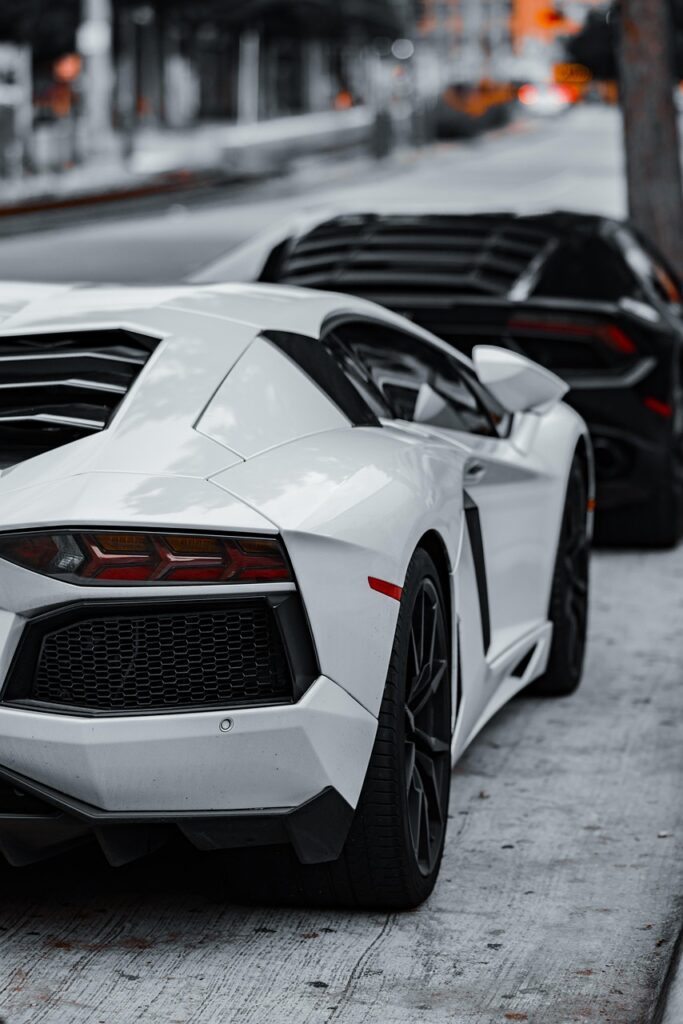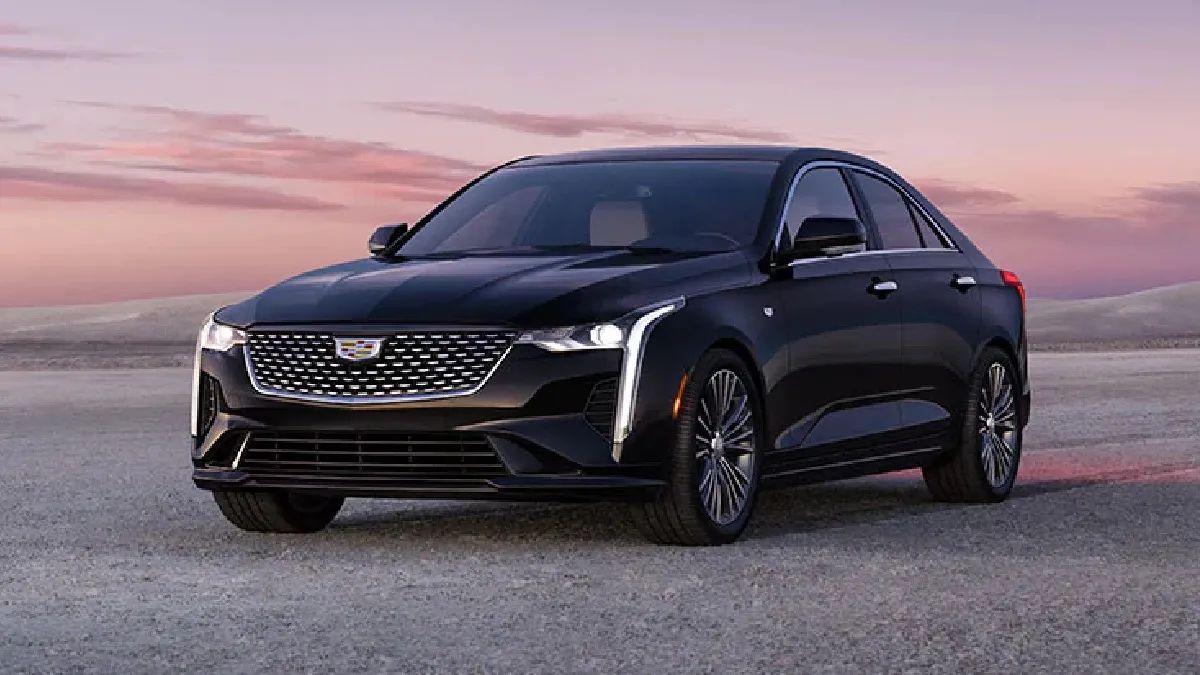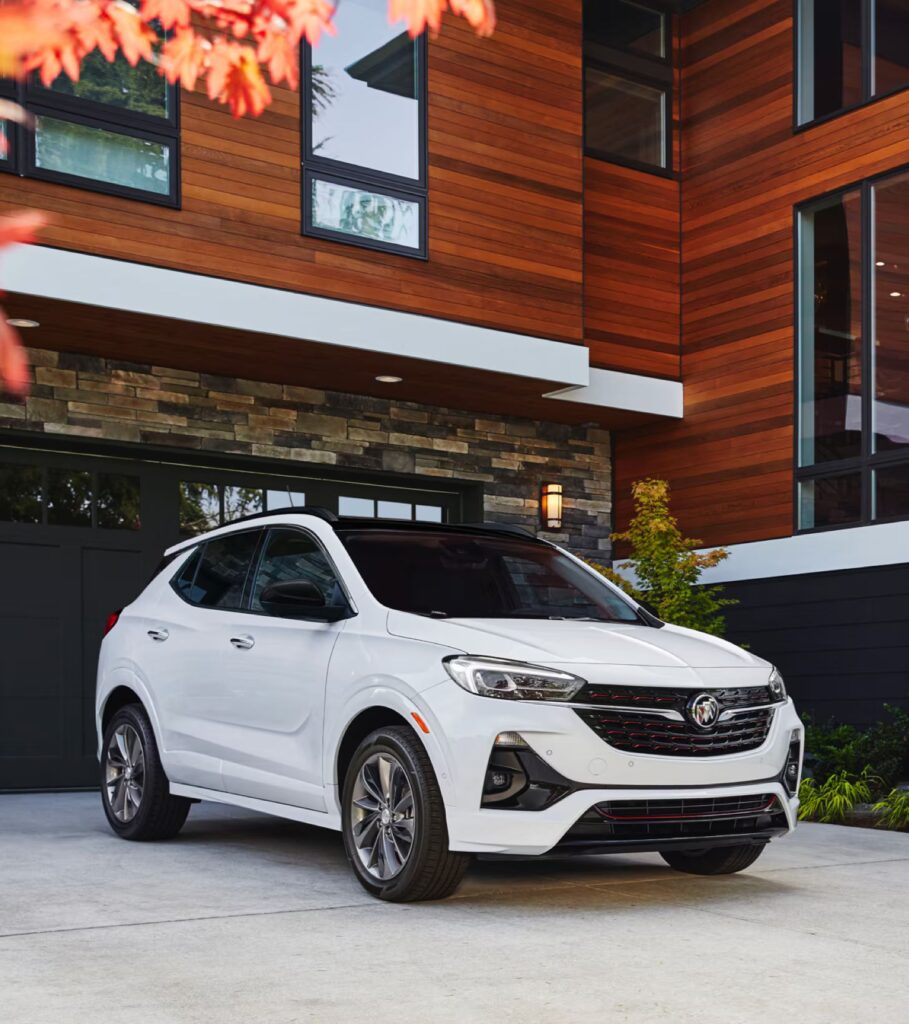
Luxury cars, by their very definition, are supposed to represent the pinnacle of automotive engineering, offering an unparalleled blend of sophistication, exhilarating performance, and cutting-edge technology. They promise an experience free from the mundane troubles often associated with more utilitarian vehicles, a seamless journey where every control responds with precision and every feature works flawlessly. Prospective buyers invest heavily, expecting a harmonious ownership experience where comfort, power, and prestige converge without compromise. Yet, as automotive enthusiasts and seasoned drivers know, the reality doesn’t always align with these lofty expectations.
Behind the glossy exteriors and lush interiors, some models are unfortunately plagued by a series of reliability issues that can profoundly mar the luxury car ownership experience. We’re talking about frustrating electrical malfunctions, problematic transmissions that sap driving pleasure, and frequent software glitches that turn advanced features into sources of irritation. Such setbacks not only necessitate repeated, inconvenient visits to repair shops but also lead to higher maintenance costs, fundamentally undermining the premium feel and exclusivity that are central to a luxury vehicle’s appeal.
Understanding these potential pitfalls is absolutely crucial for any prospective buyer navigating the complexities of the high-end automotive market. It’s about looking beyond the initial allure and delving into the long-term realities of ownership. By meticulously exploring various high-end models known for their deficiencies, this article aims to shed light on the drawbacks that can be hidden behind exquisite design and powerful engines. Our goal is to empower buyers with the knowledge needed to make informed decisions, ensuring their significant investment remains a source of pleasure rather than a cause for persistent concern. Let’s dive into some of the luxury rides that, despite their initial promise, ultimately saw their appeal diminished by critical flaws.

1. **2023 Alfa Romeo Giulia**: The 2023 Alfa Romeo Giulia is a vehicle that immediately captures attention with its dynamic performance and truly elegant Italian styling, promising an engaging driving experience unlike many of its competitors. It embodies a certain passion and flair that is quintessentially Alfa Romeo, drawing in drivers who value emotional connection and spirited handling above all else. However, this particular model has unfortunately garnered significant attention for reasons that detract from its undeniable charm, notably persistent reliability issues that have plagued the ownership experience.
Drivers of the 2023 Giulia frequently report problems with its electrical systems, which can manifest in a variety of frustrating ways. These issues often lead to unexpected behavior from vehicle controls, where functions may become erratic or unresponsive at critical moments. Compounding this, software malfunctions are a recurring theme, causing glitches within the infotainment system and errors in the navigation, turning advanced features into sources of daily annoyance rather than convenience.
These technical difficulties are more than just minor inconveniences; they necessitate multiple trips to the dealership, interrupting daily routines and eating into valuable time. Such frequent service visits significantly detract from the user experience, raising serious questions about the long-term dependability of a vehicle that is marketed on superior design and engineering. For a luxury sedan that positions itself on the cutting edge of automotive passion, these recurring issues can be a major letdown for both enthusiastic drivers and those simply seeking a reliable daily companion.
Ultimately, while the Alfa Romeo Giulia delivers an undeniable thrill behind the wheel and turns heads with its sophisticated aesthetics, its reliability struggles present a significant hurdle for many. The promise of Italian engineering and spirited driving is often overshadowed by the practical realities of owning a vehicle prone to electrical and software gremlins. This contrast between emotional appeal and functional frustration is a key factor in why its appeal can be diminished in the eyes of discerning luxury car buyers.
Read more about: Critical Stellantis Recall: Comprehensive Breakdown of 72,000 UK Vehicles Facing Engine Fire Risk
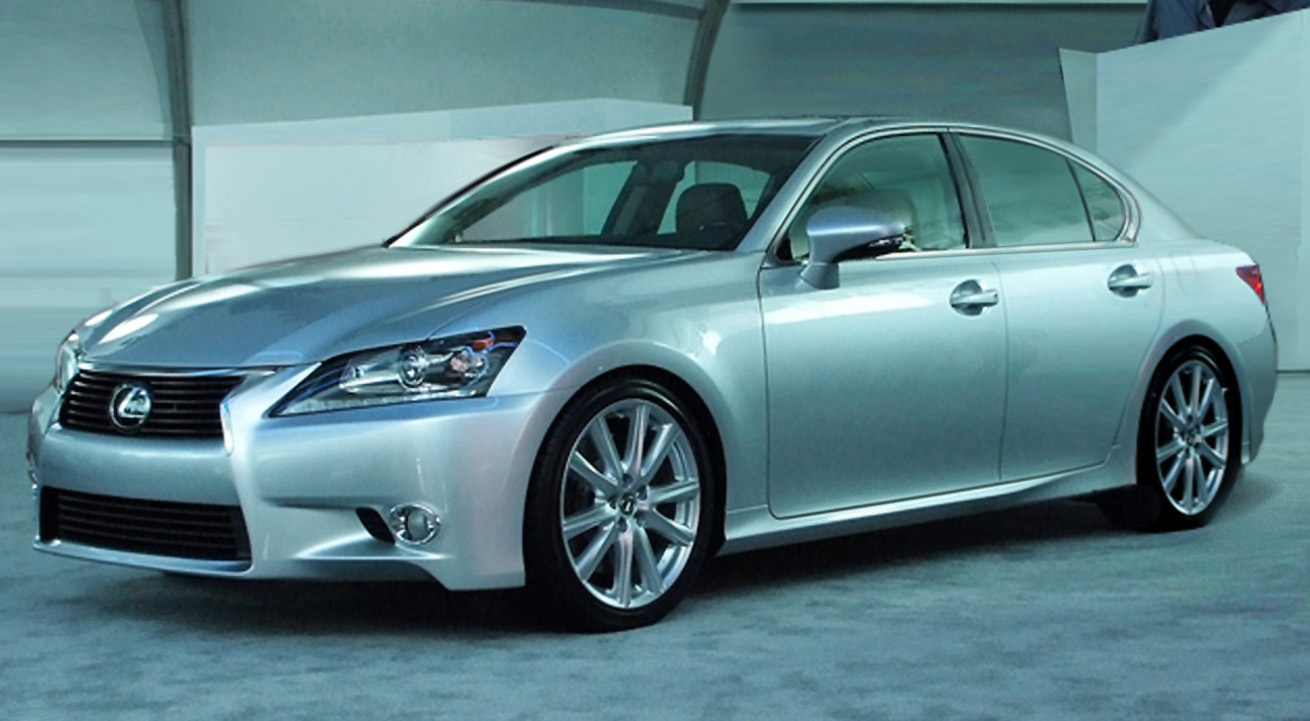
2. **Lexus ES 350**: The Lexus ES 350 has long been a benchmark for luxurious amenities and an exceptionally smooth ride quality within the premium sedan segment. It’s a car that prioritizes comfort, refinement, and a serene cabin environment, aiming to provide a truly effortless and sophisticated driving experience. Buyers typically gravitate towards the ES 350 for its reputation for quietude, plush interiors, and the overall sense of tranquility it offers on the road.
However, this model has not been entirely immune to criticism, particularly regarding its transmission issues. Owners have reported instances of jerky shifts, an attribute that is jarringly out of place in a vehicle designed for seamless operation. This lack of responsiveness from the gearbox is a significant deviation from the expected fluidity of a premium car, directly impacting the smooth driving experience that is a hallmark of the Lexus brand. Such inconsistencies in power delivery can quickly erode the sense of luxury and control.
Adding to these mechanical concerns, despite its generally high comfort levels that Lexus is celebrated for, some drivers have found the seats to be unexpectedly uncomfortable, particularly during longer drives. This ergonomic flaw, while seemingly minor, can significantly diminish the overall luxury experience, turning what should be a relaxing journey into a tiresome one. In a segment where every detail contributes to the premium feel, seat comfort is paramount and its deficiency is particularly notable.
These issues—transmission hiccups and seat discomfort—are somewhat atypical for Lexus, a brand that has meticulously built a reputation for bulletproof reliability and meticulous attention to user experience. The presence of such flaws could understandably dissuade potential buyers who are specifically looking for a hassle-free luxury car, one that upholds the brand’s legendary dependability. It highlights that even models from manufacturers renowned for quality can sometimes miss the mark on critical aspects that define true luxury.
Car Model Information: 2025 Audi Q7 55 Premium Plus
Name: Lexus ES
Caption: Lexus ES 350 (GSZ10)
Manufacturer: Toyota
Aka: unbulleted list
Production: June 1989 – present
Class: unbulleted list
BodyStyle: unbulleted list
Layout: unbulleted list
ModelYears: 1990–present
Categories: 1990s cars, 2000s cars, 2010s cars, 2020s cars, All-wheel-drive vehicles
Summary: The Lexus ES is a mid-size luxury sedan marketed since 1989 by Lexus, the luxury division of Toyota, across multiple generations, each offering V6 engines and a front-engine, front-wheel-drive layout. The first five generations of the ES used the Toyota Camry platform, while the latter generations are more closely related to both the Camry and the Avalon. Manual transmissions were offered until 1993, a lower-displacement inline-four engine became an option in Asian markets in 2010, and a gasoline-electric hybrid version was introduced in 2012. The ES was Lexus’s only front-wheel drive vehicle until 1998, when the related RX was introduced, and the sedan occupied the entry-level luxury car segment of the Lexus lineup in North America and other regions until the debut of the IS in 1999. The ES name stands for “Executive Sedan”. However, some Lexus importers use the name, “Elegant Sedan”.
Introduced in 1989, the first generation ES 250 was one of two vehicles in Lexus’s debut range, along with the LS 400. The second generation ES 300 debuted in 1991, followed by the third generation ES 300 in 1996, and the fourth generation ES 300/330 in 2001. The first- through fourth generation sedans shared body styling elements with Japan-market Toyota sedans, and a domestic market equivalent, the Toyota Windom (Japanese: トヨタ・ウィンダム, Toyota Windamu), was sold until the launch of the fifth generation ES in 2006. The word “Windom” is a combination of “win” and the suffix “dom” expresses a state of perpetual victory. The fifth generation ES used body styling marketed by Lexus as L-finesse and debuted in early 2006 as a 2007 model. The sixth generation ES debuted in the first half of 2012 as a 2013 model, and features increased cabin dimensions due to a longer wheelbase which is shared with the full-size XX40 series Avalon.
Lexus has positioned the ES in the comfort luxury segment, with an emphasis on interior amenities, quietness, and ride quality, in contrast with more firm-riding sport sedans. Buyers seeking more performance-focused models are targeted by the Lexus IS and rival makes, with such models offering a sportier drive with differently tuned suspensions. In Europe, Japan and other markets where it was not available until the seventh generation model, the GS sport sedans occupy the mid-size category in the Lexus lineup until it was cancelled August 2020. In the United States, the ES has been the best-selling Lexus sedan for over fifteen years.
Get more information about: Lexus ES
Buying a high-performing used car >>>
Brand: Lexus Model: ES 350
Price: $55,675 Mileage: 20,490 mi.
Read more about: Seriously Where Did They Go? 9 Classic Sedans That Vanished From Our Streets.
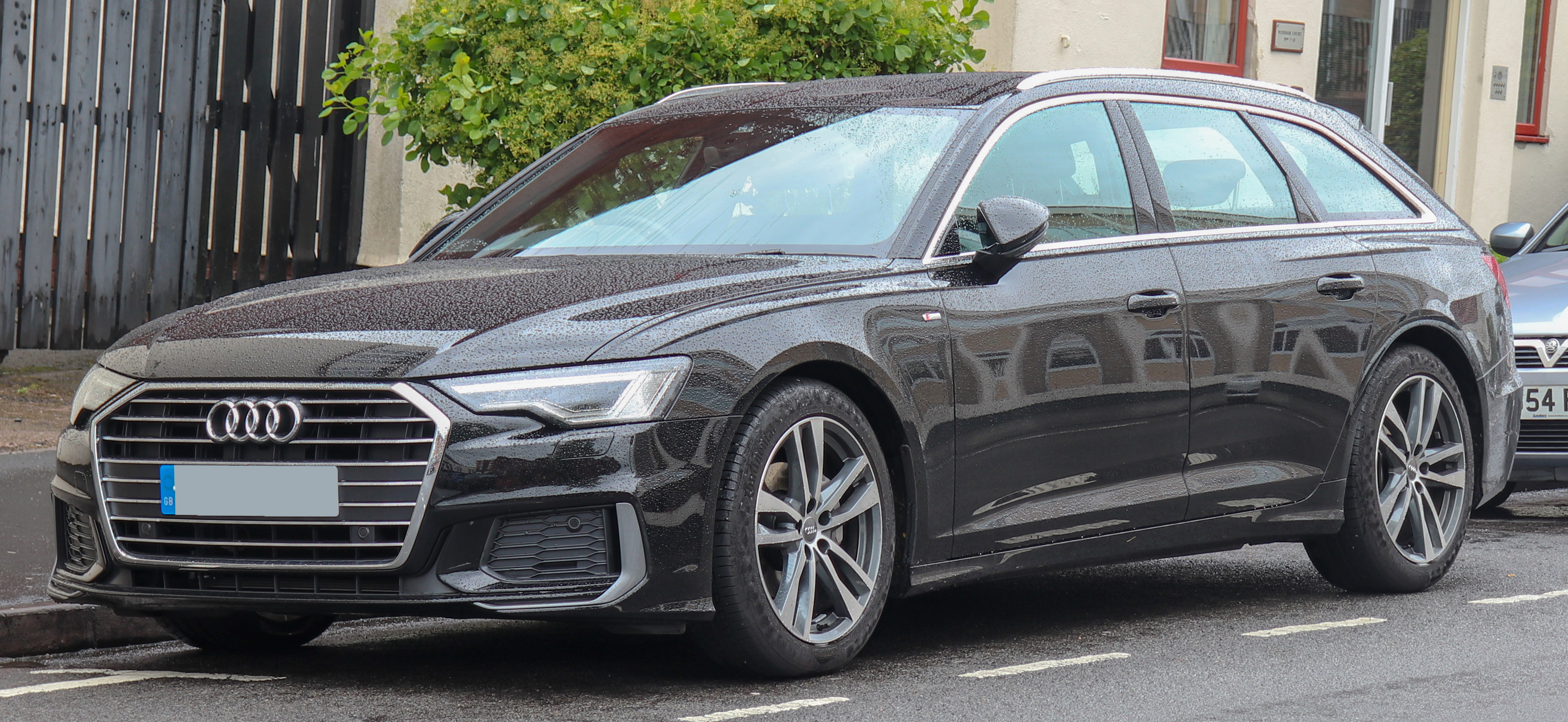
3. **2019 Audi A6**: The 2019 Audi A6 is a prime example of sophisticated design seamlessly integrated with cutting-edge technology, embodying the German automaker’s commitment to elegant aesthetics and advanced digital interfaces. Upon its release, it promised a refined driving experience complemented by a highly intuitive and feature-rich cabin, central to which was its Multi Media Interface (MMI) infotainment system. This system was designed to be the command center for navigation, entertainment, and vehicle settings, showcasing Audi’s technological prowess.
Nonetheless, this particular model year has faced its share of significant challenges, especially concerning the very MMI infotainment system that was meant to be a highlight. Owners have frequently reported frustrating issues such as system freezes, where the entire interface becomes unresponsive, locking out crucial functions. Furthermore, unresponsive touch screens are a common complaint, making interaction difficult and distracting, and persistent glitches affect both navigation accuracy and entertainment functions, rendering them unreliable. These technological shortcomings are not only incredibly frustrating in daily use but can also be costly and time-consuming to rectify.
Beyond the infotainment system, the vehicle’s sophisticated sensor array has also proven problematic. Malfunctioning sensors can trigger false warnings, startling drivers with unnecessary alerts, or, more critically, fail to alert at crucial times, thereby compromising both convenience and safety. This unreliability in safety systems, coupled with infotainment struggles, undermines the sense of secure, high-tech control that Audi endeavors to provide.
When a vehicle’s core technological offerings—its infotainment and sensor systems—demonstrate such unreliability, it significantly detracts from the overall luxury experience. Buyers of the 2019 Audi A6 expected seamless integration and dependable functionality, but instead often found themselves grappling with frustrating digital failures. This disconnect between promise and performance ultimately impacted the A6’s appeal, proving that even a meticulously designed luxury car can be let down by its complex electronics.
Car Model Information: 2016 Audi A6 2.0T Premium Plus
Name: Audi A6
Caption: 2025 Audi A6 (C9)
Manufacturer: Audi AG
Production: 1994–present,2000–present (China)
Class: Executive car
BodyStyle: Sedan (car)
Layout: longitudinal engine,FF layout
Sp: uk
Predecessor: Audi 100
Categories: 2000s cars, 2010s cars, 2020s cars, All-wheel-drive vehicles, All Wikipedia articles written in British English
Summary: The Audi A6 is an executive car manufactured by the German company Audi since 1994. Now in its sixth generation, the successor to the Audi 100 is manufactured in Neckarsulm, Germany, and is available in saloon and estate configurations, the latter marketed by Audi as the Avant. Audi’s internal numbering treats the A6 as a continuation of the Audi 100 lineage, with the initial A6 designated as a member of the C4-series, followed by the C5, C6, C7, C8 and the C9. The related Audi A7 is essentially a Sportback (liftback) version of the C7-series and C8-series A6 but is marketed under its own separate identity and model designation.
All generations of the A6 have offered either front-wheel-drive or Torsen-based four-wheel-drive, marketed by Audi as their quattro system. The A6 has also been used as the basis for the company’s Allroad models since 1999.
Get more information about: Audi A6
Buying a high-performing used car >>>
Brand: Audi Model: A6
Price: $9,310 Mileage: 161,792 mi.
Read more about: The High Cost of Hype: 13 Celebrity Fashion Lines That Crumbled Under Pressure

4. **2023 Jaguar F-PACE**: The 2023 Jaguar F-PACE arrives on the scene with a compelling blend of luxury, utility, and sporting pedigree, positioning itself as an appealing choice for upscale buyers in the fiercely competitive luxury SUV segment. Its sleek design, refined interior, and promise of dynamic handling are all hallmarks of the Jaguar brand, drawing in those who desire both practicality and a distinctive driving character. It truly aims to offer a comprehensive premium experience.
However, this model has been unfortunately plagued by reliability issues that significantly undermine its desirable attributes, particularly concerning its in-car electronics and, more critically, its engine cooling system. Electrical faults within the vehicle can lead to the erratic behavior of digital displays and various controls, creating an unpredictable and frustrating user experience. Imagine having your navigation or climate control suddenly act up mid-journey; it severely detracts from the premium feel.
Even more concerning are the reported failures within the engine cooling system. Such malfunctions pose serious risks not only to immediate engine performance but also to its long-term longevity, potentially leading to expensive and extensive repairs. A compromised cooling system can herald catastrophic engine damage, transforming a luxury investment into a financial liability. This mechanical vulnerability is a critical flaw that casts a long shadow over the vehicle’s appeal.
These persistent reliability issues, manifesting in frequent and often expensive repairs, significantly undermine the overall driving enjoyment and ownership experience of this otherwise desirable SUV. The allure of Jaguar’s blend of luxury and sportiness is diminished when owners face repeated trips to the service center and worry about the fundamental integrity of the vehicle. For a car that promises a blend of elegance and robust performance, these deficiencies are a profound letdown, challenging the brand’s image of sophisticated engineering.
Car Model Information: 2026 Jaguar F-PACE R-Dynamic S P250 AWD Automatic
Name: Jaguar F-Pace
Manufacturer: Jaguar Land Rover
ModelCode: X761
Production: February 2016–present
Assembly: Solihull plant
Class: Compact crossover SUV
BodyStyle: SUV
Layout: ubl
Platform: JLR D7a
Related: Jaguar XE,Jaguar XF (X260),Range Rover Velar
Engine: ubl
Motor: 106 kW
Abbr: on
Transmission: Manual transmission,ZF 8HP transmission
Drivetrain: Mild Hybrid
Battery: Kilowatt-hour,Lithium-ion battery
Wheelbase: 2874 mm
Length: 4747 mm
Width: 2071 mm
Height: 1664 mm
Weight: Convert
Designer: Ian Callum
Sp: uk
Categories: 2020s cars, All Wikipedia articles written in British English, Articles with short description, CS1 maint: archived copy as title, Cars introduced in 2016
Summary: The Jaguar F-Pace (X761) is a compact luxury crossover SUV made by Jaguar Land Rover, a British car manufacturer, under their Jaguar marque. It is the first Jaguar SUV. It was formally announced at the 2015 North American International Auto Show in Detroit, with sales commencing in 2016 following an unveiling at the 2015 International Motor Show Germany in Frankfurt.
The design of the F-Pace is based on the Jaguar C-X17 concept car, which was unveiled on September 9, 2013, at the Frankfurt Motor Show. The 2017 Jaguar F-Pace has been named the honorary winner of the 2017 World Car of the Year and World Car Design of the Year Awards at the New York International Auto Show. The F-Pace is built at Jaguar Land Rover’s Solihull plant along with the Range Rover Velar and employs an additional 1,300 workers.
Get more information about: Jaguar F-Pace
Buying a high-performing used car >>>
Brand: Jaguar Model: F-PACE
Price: $59,895 Mileage: 4,632 mi.
Read more about: 15 Iconic Nameplates: Classic Car Brands Fueling the Electric Revolution
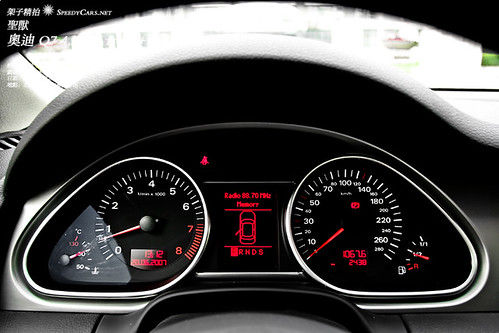
5. **Audi Q7**: The Audi Q7 has long stood as a formidable contender in the luxury SUV segment, celebrated for its expansive, meticulously crafted interiors and a suite of advanced technological features designed to elevate every journey. It appeals to discerning buyers seeking a family-friendly vehicle that doesn’t compromise on premium feel, robust capability, or sophisticated German engineering. With its commanding presence and promise of comfort for all occupants, the Q7 projects an image of reliable luxury that many aspire to.
However, beneath its polished exterior and high-tech façade, the Audi Q7 has unfortunately become associated with an unwelcome reputation for high maintenance costs and, more critically, frequent breakdowns of essential components. These aren’t minor glitches; owners often face significant issues with the electrical systems, which can impact anything from infotainment to driver-assist features, and even more alarmingly, problems with the braking system, a fundamental aspect of vehicle safety and performance. Such occurrences cast a long shadow over the ownership experience, directly challenging the brand’s commitment to reliability.
Many of these problems emerge unexpectedly, transforming what should be a seamless luxury experience into a series of frustrating and often expensive trips to the service center. For instance, electrical system faults can lead to a range of unpredictable behaviors, from a flickering dashboard display to complete failure of climate control or navigation. Similarly, issues with the brakes, a critical safety component, not only incur substantial repair bills but also raise serious concerns about driver confidence and overall vehicle safety, which are non-negotiable in the luxury segment.
The financial burden of these repairs, coupled with the inconvenience of a vehicle repeatedly out of commission, fundamentally undermines the value proposition of a luxury SUV. Buyers expect a premium vehicle to provide peace of mind, not a constant source of mechanical worry and budget strain. When a car that costs a significant sum frequently requires expensive fixes, the perceived exclusivity and hassle-free ownership dissolve, leaving behind dissatisfaction.
Ultimately, while the Audi Q7 undeniably delivers on spaciousness and technological ambition, its persistent issues with high maintenance demands and the unreliability of critical systems make it a less attractive option for those who prioritize long-term dependability and cost-effectiveness in their luxury vehicles. The allure of its advanced offerings is significantly diminished when the practical realities of ownership include frequent and costly repairs, challenging the perception of Audi’s engineering prowess in this particular model and urging potential buyers to consider these crucial drawbacks.
Car Model Information: 2017 Audi Q7 3.0T Premium
Name: Audi Q7
Manufacturer: Audi AG
Production: November 2005–present
ModelYears: 2006–present
Class: Full-size,luxury SUV
BodyStyle: SUV
Layout: Longitudinal engine,front-engine, four-wheel-drive
Sp: uk
Categories: 2010s cars, 2020s cars, All-wheel-drive vehicles, All Wikipedia articles written in British English, All articles with dead external links
Summary: The Audi Q7 is a crossover SUV made by the German manufacturer Audi, unveiled in September 2005 at the Frankfurt Motor Show. Production of this seven-seater SUV began in November 2005 at the Volkswagen Bratislava Plant in Bratislava, Slovakia.
The Q7 was the first SUV sold by Audi and went on sale in 2006. Later, Audi’s second SUV, the Q5, was unveiled as a 2009 model. Audi has since unveiled a third SUV model, the Q3, which went on sale in the third quarter of 2011, and a fourth SUV model, the Q2, which went on sale in November 2016. The Q7 shares a Volkswagen Group MLB platform and chassis with the Bentley Bentayga, Lamborghini Urus, Porsche Cayenne and the Volkswagen Touareg.
The Q7 is the second largest vehicle from Audi, being surpassed by the Q6 since 2022. While the Q7 has been the flagship SUV in Audi’s product portfolio, a top-of-the-line model with a lower roof, called the Audi Q8, was released in 2018.
It was one of the vehicles involved in the Volkswagen emissions scandal, with the company ordered to buy back some of the affected cars manufactured between 2009 and 2012. The Q7 is also subject to hundreds of NTSB complaints with many relating to potentially catastrophic engine failure issues, and a class-action lawsuit related to squealing brakes.
Get more information about: Audi Q7
Buying a high-performing used car >>>
Brand: Audi Model: Q7
Price: $14,950 Mileage: 95,081 mi.
Read more about: Vintage ’50s Roadsters: Can You Name These Cars Only a True Connoisseur Remembers?
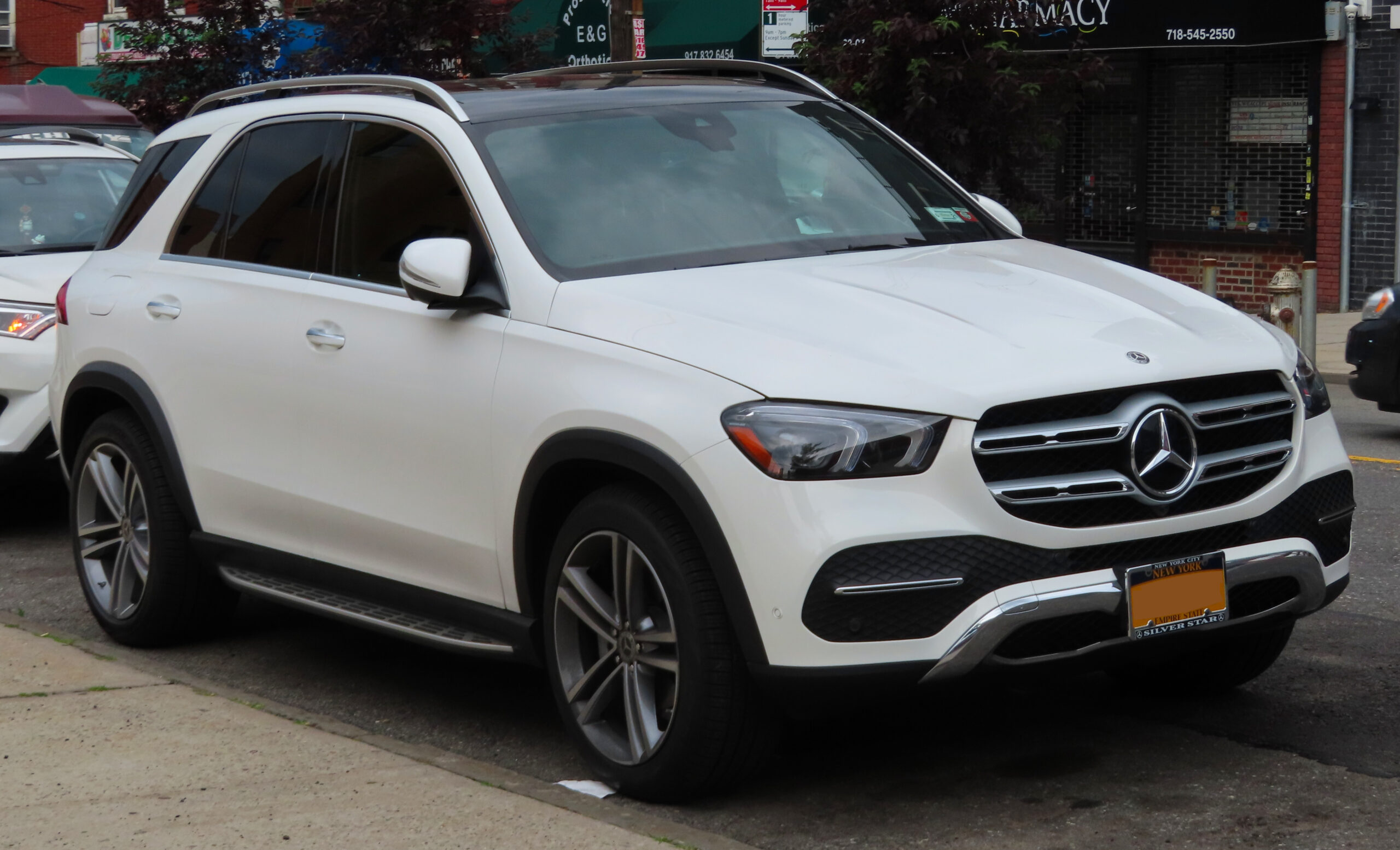
6. **2020 Mercedes-Benz GLE**: The 2020 Mercedes-Benz GLE entered the competitive luxury SUV arena with a clear mission: to set new benchmarks for opulence, comfort, and technological sophistication. It boasts a beautifully appointed cabin, replete with plush materials and a design aesthetic that truly epitomizes modern automotive luxury. This model was particularly notable for introducing the brand’s innovative MBUX infotainment system, promising an intuitive and highly personalized user experience, seamlessly integrating advanced digital interfaces with the traditional Mercedes-Benz grandeur and an impressive array of driver assistance features.
Despite its impressive initial presentation and luxurious appeal, the 2020 GLE has been significantly let down by the very electrical systems and the advanced MBUX infotainment unit that were meant to be its crowning achievements. Owners have reported a disheartening array of malfunctions, ranging from erratic behavior in the navigation system to intermittent failures of the climate control, and even issues with the digital instrument cluster. These aren’t just minor inconveniences; they directly impact the comfort, convenience, and perceived sophistication that buyers expect from a high-end Mercedes-Benz.
Imagine being on a long drive, relying heavily on the integrated navigation, only to have it freeze unexpectedly or provide incorrect directions, leading to frustrating detours. Or grappling with a climate control system that unpredictably fluctuates between extreme temperatures, compromising passenger comfort. Such glitches transform a serene driving environment into a constant source of discomfort and frustration, making the advanced features, designed to simplify and enhance the journey, instead become sources of irritation and unreliability.
The MBUX system, intended to be a seamless command center, often presented with unresponsive touchscreens or sluggish performance, undermining the intuitive interaction it promised. This constant battle with technology that fails to meet expectations chips away at the overall luxury experience. For a brand that has meticulously cultivated a reputation for uncompromising quality and reliability, these foundational electronic issues are a significant blow to that image.
The frequent necessity of trips to the service center to address these pervasive electrical and software glitches profoundly mars the ownership experience. Mercedes-Benz represents the pinnacle of automotive luxury and reliability for many, and for a flagship SUV to be plagued by such fundamental operational problems is a serious detractor. For luxury buyers, the expectation is not just premium features, but dependable, consistent functionality, and in this regard, the 2020 GLE often fell short, diminishing its appeal considerably and frustrating its loyal customer base.
Read more about: Unmasking the Speed Demons: A Deep Dive into the 13 Car Models Most Often Ticketed in the U.S.

7. **Cadillac Escalade**: The Cadillac Escalade stands as an undeniable icon of American luxury and a bold symbol of success, dominating the full-size SUV segment with its imposing presence, opulent interiors, and a wealth of advanced features. For decades, it has captivated buyers who demand uncompromising space, unbridled power, and an unmistakable statement of prestige. It embodies a particular vision of high-end motoring, where grandeur and robust utility converge to offer a truly commanding and comfortable ride for large families or those with significant cargo needs.
However, even this titan of luxury has its Achilles’ heel, notably in the form of mechanical grievances that can significantly detract from its otherwise impressive offerings. The Escalade has been known to suffer from persistent transmission issues, which can manifest as rough shifts, delayed engagements, or an overall lack of smoothness that is jarringly out of place in a vehicle of its stature and price point. This directly impacts the refined and effortless driving experience that is central to the luxury proposition.
These transmission problems are more than just minor annoyances; they can lead to a noticeable hesitation in acceleration, an unsettling jolt during gear changes, or even a feeling of disconnect between the engine’s power and the wheels. Such inconsistencies in power delivery and shift quality fundamentally compromise the smooth, predictable performance expected from a premium SUV, eroding driver confidence and making everyday driving less enjoyable.
Compounding these mechanical concerns are problems with the sophisticated infotainment system, which, like other luxury models, is a crucial interface for the modern driver. Owners report instances of screen freezes, unresponsive interfaces, and general glitches that undermine the seamless technological integration expected from a contemporary luxury vehicle. These failures, while perhaps not as critical as a transmission problem, chip away at the premium feel and convenience that are paramount in this segment, forcing drivers to contend with technology that doesn’t consistently perform.
Such persistent issues not only compromise the daily functionality and driving enjoyment of the Escalade but also reflect poorly on the overall reliability of what is unequivocally considered a flagship model for Cadillac. For buyers investing in such a significant luxury vehicle, the expectation is flawless operation and consistent performance across all systems. When these expectations are unmet due to recurring mechanical and electronic flaws, the vehicle’s appeal as a symbol of ultimate luxury and dependability is unfortunately diminished, leaving owners to question their significant investment.
Car Model Information: 2023 Cadillac Escalade Premium Luxury
Name: Cadillac Escalade
Caption: Fifth generation Cadillac Escalade
Manufacturer: Cadillac
Production: 1998–present,2002–present (ESV),2001–2013 (EXT),2008–2013 (Hybrid)
ModelYears: 1999–2000,2002–present
Class: Full-size,luxury car,sport utility vehicle
Related: ubl
Layout: Front-engine, rear-wheel drive layout,Front-engine, four-wheel drive layout
Categories: 2000s cars, 2010s cars, 2020s cars, All-wheel-drive vehicles, All Wikipedia articles in need of updating
Summary: The Cadillac Escalade is a full-size luxury SUV manufactured by General Motors and marketed by Cadillac as its first major entry into the SUV market. The Escalade was introduced for the 1999 model year in response to an influx of new luxury SUVs in the late 1990s including the Mercedes-Benz M-Class, Range Rover, Lexus LX, and Ford’s 1998 debut of the Lincoln Navigator. The Escalade project went into production only ten months after it was approved. The Escalade is built in Arlington, Texas.
The term “escalade” refers to a siege warfare tactic of scaling defensive walls or ramparts with the aid of ladders or siege towers. More generally, it is a French word which is the noun-equivalent form of the French verb escalader, which means “to climb or scale”.
The Escalade is currently sold in North America and select international markets (Europe and Asia) where Cadillac has official sales channels. The Escalade ESV (Escalade Stretch Vehicle) is sold in North America, Russia, and the Middle East, but is only available by special order in some international markets. The right-hand-drive Escalade and Escalade ESV are available through third-party conversion specialists without official agreement with Cadillac in Australian, Oceanic, and Japanese markets.
On August 8, 2023, GM presented the Escalade IQ, an all-electric version of the Escalade, and the third model in Cadillac’s EV line, after the Celestiq, and Lyriq. It is expected to go on sale in late 2024 for the 2025 model year, with a starting price of $130,000.
The Escalade has gone through five generations, the most recent (the fifth) prsented in 2021, noted for its technology and self-driving capability. The fifth generation Escalade is nearly two metres high, and was criticized by The Verge for its excessive size and hazard to pedestrians.
Get more information about: Cadillac Escalade
Buying a high-performing used car >>>
Brand: Cadillac Model: Escalade
Price: $62,995 Mileage: 44,458 mi.
Read more about: 15 Iconic Nameplates: Classic Car Brands Fueling the Electric Revolution
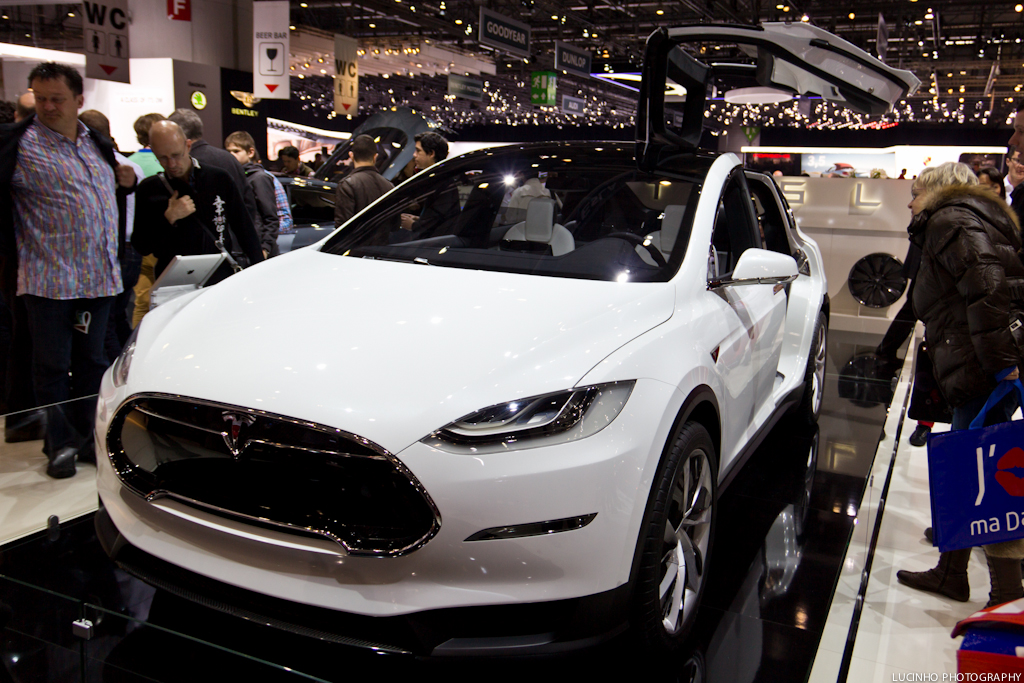
8. **Tesla Model S**: The Tesla Model S burst onto the automotive scene as a groundbreaking pioneer, spearheading the electric vehicle revolution with its audacious design, blistering acceleration, long-range capabilities, and a promise of a technologically advanced future. It immediately captured the imagination of buyers with its state-of-the-art software, minimalist yet luxurious interior dominated by a large central touchscreen, and impressive performance metrics, positioning itself at the absolute forefront of electric vehicle innovation and high-end automotive engineering.
Yet, despite its revolutionary spirit and undeniable performance credentials, the Tesla Model S has faced ongoing and significant concerns regarding its build quality. While the cutting-edge technology and electric powertrain within the vehicle often shine, the execution of its physical construction has frequently been a point of contention for owners, highlighting a disparity between its innovative core and its tangible assembly.
Reports have consistently highlighted a range of issues stemming from this build quality, from relatively minor aesthetic imperfections like misaligned body panels, inconsistent gaps between different components, and poorly fitted trim pieces, to more substantial problems that directly affect the vehicle’s structural integrity and perceived luxury. These seemingly small details become glaring flaws in a vehicle marketed as a premium product.
Beyond the visible issues, these build quality deficiencies sometimes encompass more severe electrical problems that can directly affect the vehicle’s core performance and safety features. Such issues are particularly frustrating for owners who have invested a substantial sum in a high-end electric vehicle, expecting meticulous craftsmanship and unwavering reliability commensurate with its premium price tag and cutting-edge image. The presence of these physical and functional inconsistencies creates a stark disconnect with the futuristic promise.
These challenges underscore the complexities Tesla has faced in rapidly scaling its production while simultaneously striving to maintain stringent quality control standards across its manufacturing processes. While the Model S continues to innovate and push boundaries in terms of electric powertrain and software, its struggles with fundamental build quality and occasional electrical gremlins have undeniably become a recurring theme, dampening its otherwise brilliant appeal for many luxury car buyers who expect perfection and consistency in every aspect of their high-end automotive investment.
Car Model Information: 2025 Audi Q7 55 Premium Plus
Name: Tesla Model S
ModelYears: 2013–present
Alt: A front-three quarter view of a gray Model S
Caption: #2016–2019: First major update
Designer: Franz von Holzhausen
Weight: cvt
Height: cvt
Width: cvt
Length: cvt
Wheelbase: cvt
ElectricRange: cvt
Battery: kWh,lithium-ion battery
Motor: Unbulleted list
Transmission: Reduction drive
Related: Tesla Model X
Layout: Rear-motor, rear-wheel drive,Dual-motor, all-wheel-drive,Tri-motor, all-wheel-drive layout
BodyStyle: liftback,sedan (automobile)
Class: Full-size car
Assembly: Unbulleted list
Production: June 2012 – present
Manufacturer: Tesla, Inc.
Sp: us
Chassis: Unibody
Categories: 2020s cars, All-wheel-drive vehicles, All Wikipedia articles written in American English, All articles containing potentially dated statements, Articles containing potentially dated statements from 2025
Summary: The Tesla Model S is a battery-electric, four-door full-size car produced by the American automaker Tesla since 2012. The automaker’s second vehicle and longest-produced model, the Model S has been described as one of the most influential electric cars in the industry. Car and Driver named it one of the best cars of the year in 2015 and 2016. Its various accolades include the Motor Trend Car of the Year Award in 2013.
Tesla started developing the Model S around 2007 under the codename WhiteStar, with Henrik Fisker appointed as lead designer for the project. After a dispute with Elon Musk, Tesla’s CEO, Fisker was replaced by Franz von Holzhausen who, by 2008, had designed the production Model S’s exterior. Tesla unveiled a prototype of the vehicle in March 2009 in Hawthorne, California. In 2010, Tesla acquired a facility in Fremont, California, to produce the Model S, which was previously owned by General Motors and Toyota. Series manufacture of the car officially began at the Tesla Fremont Factory in June 2012. Tesla carried out the final assembly for European markets at its facilities in Tilburg, Netherlands, between 2013 and 2021.
Constructed mostly of aluminum, the Model S shares 30 percent of its components with the Model X—a crossover SUV that was introduced in 2015. The Model S has undergone several updates during its production, the most prominent ones occurring in 2016 and 2021. These updates have usually included modifications to the motor, such as changes to power or torque, revised exterior elements, and refreshed interior features. One such change included the 2015 introduction of Tesla Autopilot—a partial vehicle automation advanced driver-assistance system. The 2021 update led to the introduction of the high-performance, three-motor Plaid—Tesla’s most powerful model.
In 2015, the Model S was the world’s best-selling plug-in electric vehicle. In 2012, it was included on Time’s list of the Best Inventions of the Year, and the magazine later included it on its list of the 10 Best Gadgets of the 2010s in 2019. In 2014, The Daily Telegraph described the Model S as a “car that changed the world”. Road & Track argued that, with the introduction of the Plaid and features such as the yoke steering wheel, Tesla managed to turn the Model S into “perhaps one of the worst [cars in the world]”.
Get more information about: Tesla Model S
Buying a high-performing used car >>>
Brand: Tesla Model: Model S
Price: $55,675 Mileage: 20,490 mi.
Read more about: Beyond the Premium Price Tag: Unveiling 15 Top Affordable Tire Brands That Deliver Quality and Value Over Expensive Alternatives Like Michelin
In the dynamic and fiercely competitive world of luxury automobiles, where innovation is constant and expectations are sky-high, even the most prestigious brands can stumble. The vehicles we’ve explored in this article, from iconic SUVs to groundbreaking electric sedans, each promised an unparalleled blend of sophistication, performance, and cutting-edge technology. Yet, each, in its own distinct way, saw its allure diminished by critical flaws—be it persistent electrical malfunctions, problematic transmissions, or significant build quality issues—that eroded consumer confidence and challenged their premium status. This comprehensive look serves as a vital reminder that for any luxury purchase, discerning buyers must always look beyond the initial shine to thoroughly evaluate a vehicle’s long-term reliability and the true consistency of its engineering. After all, genuine luxury isn’t just about what a car promises, but what it consistently delivers, day in and day out.

